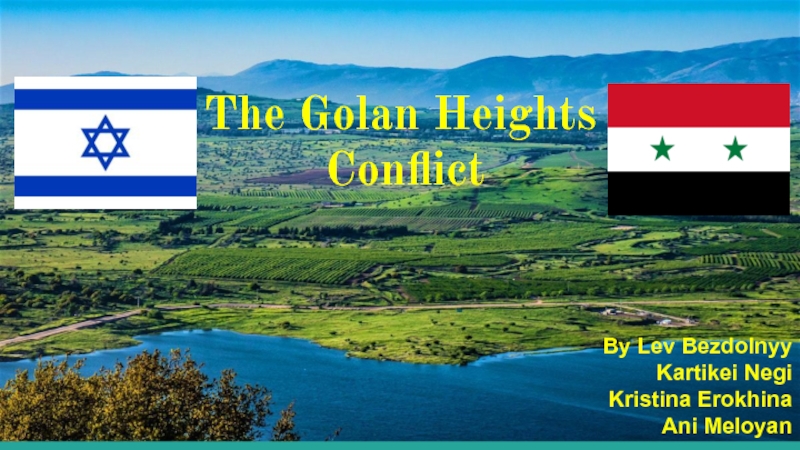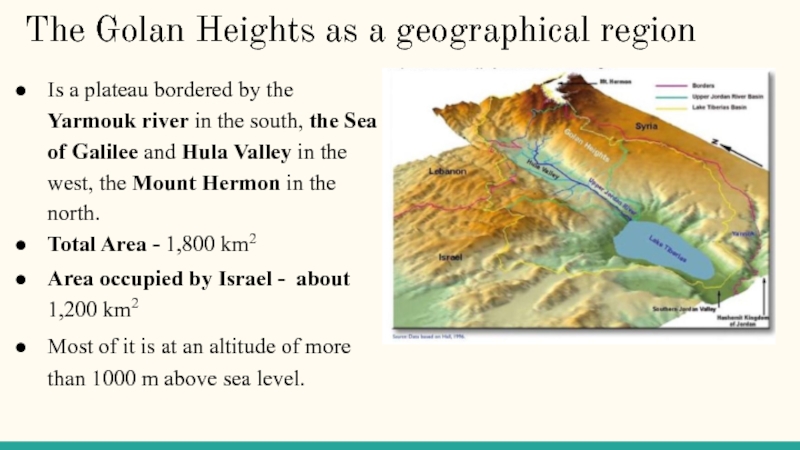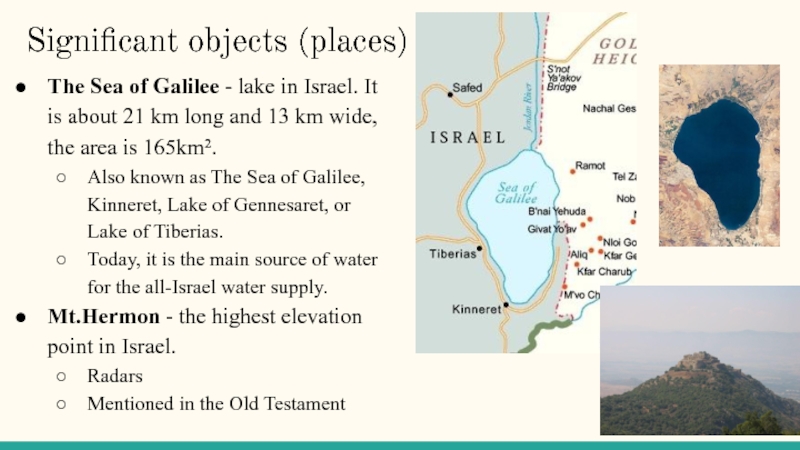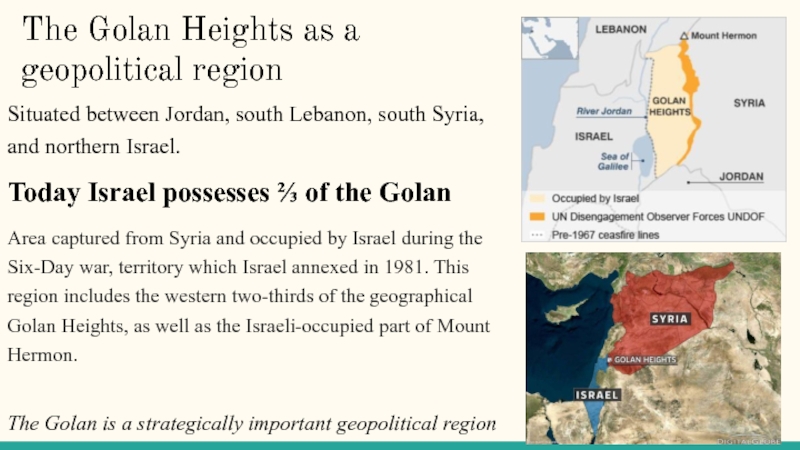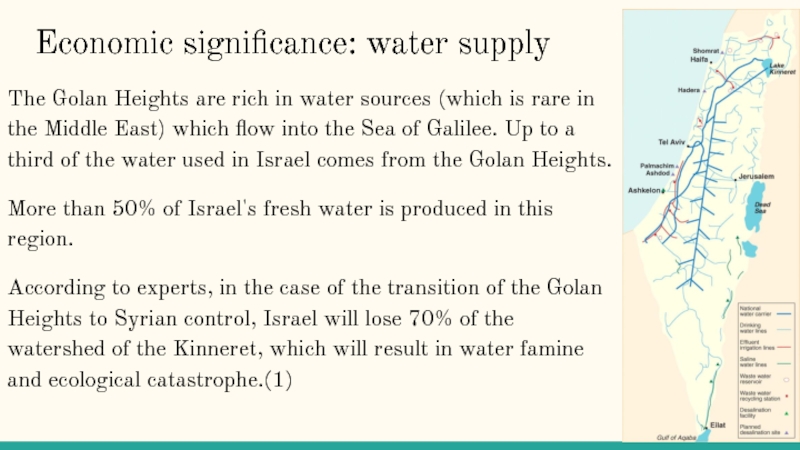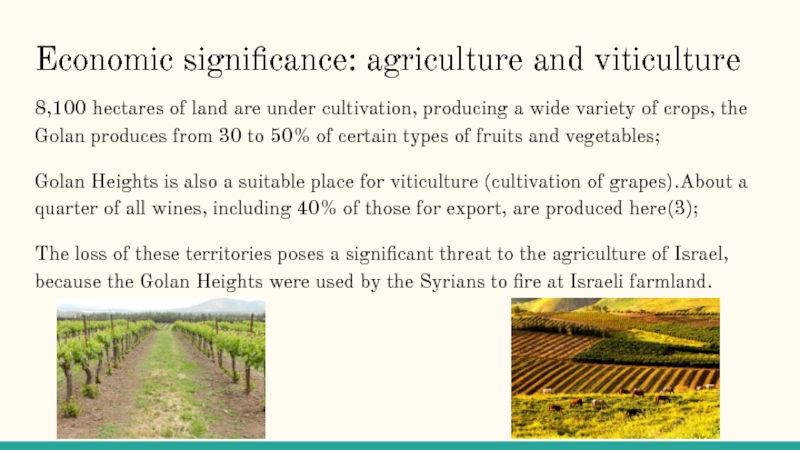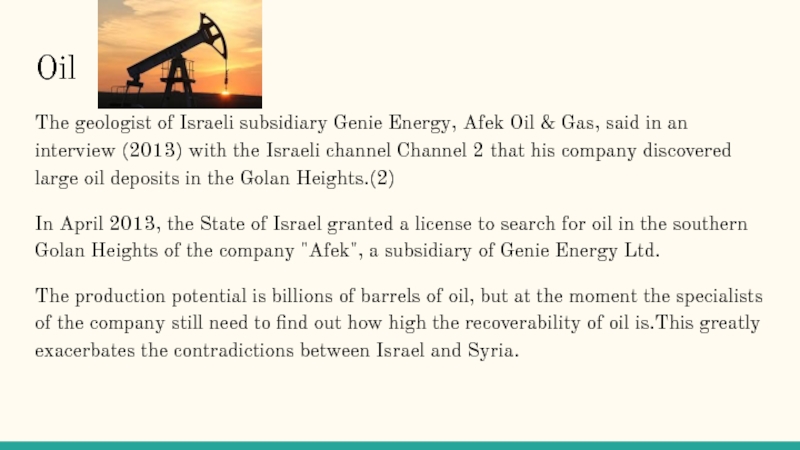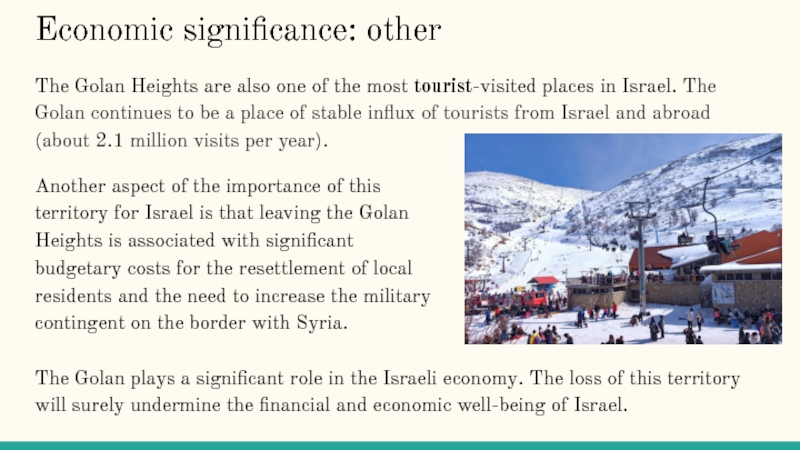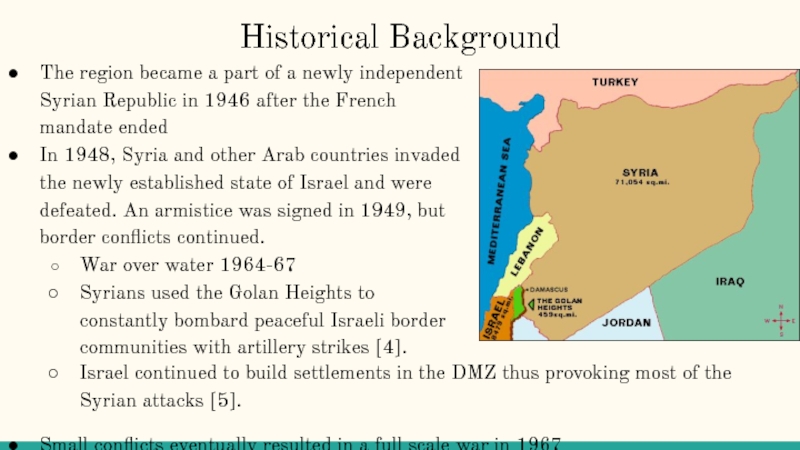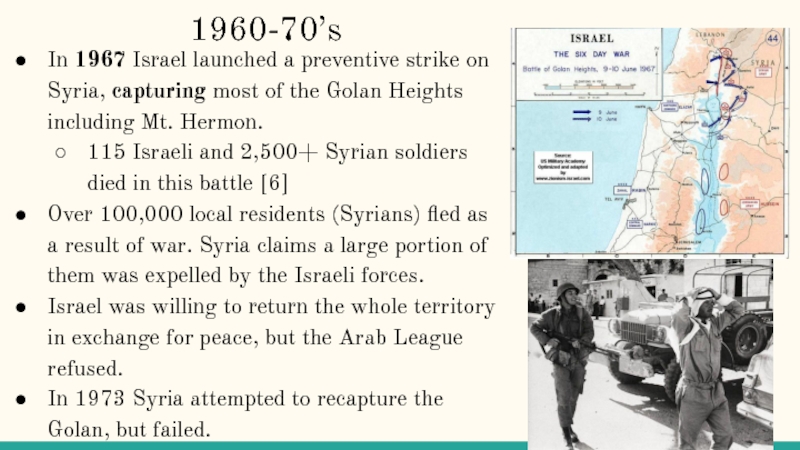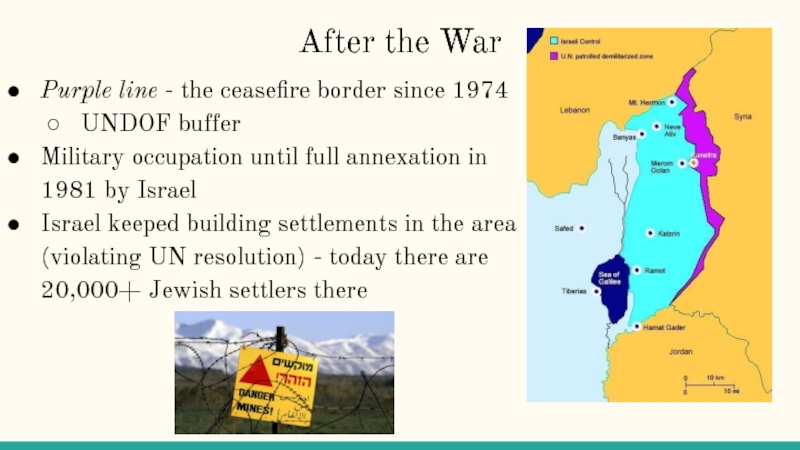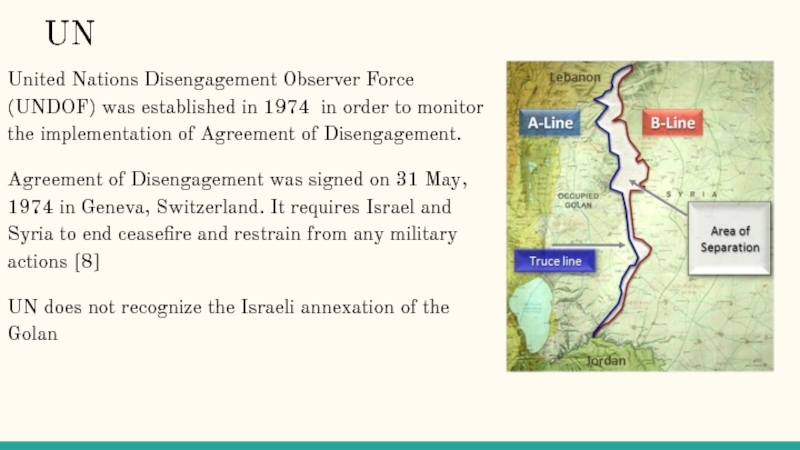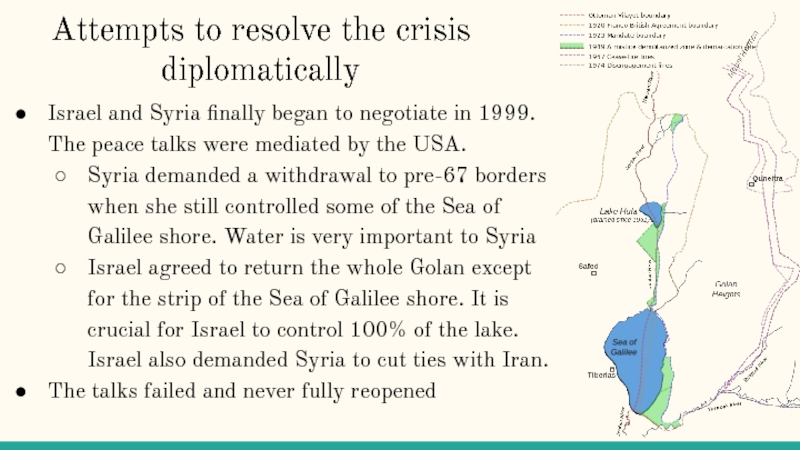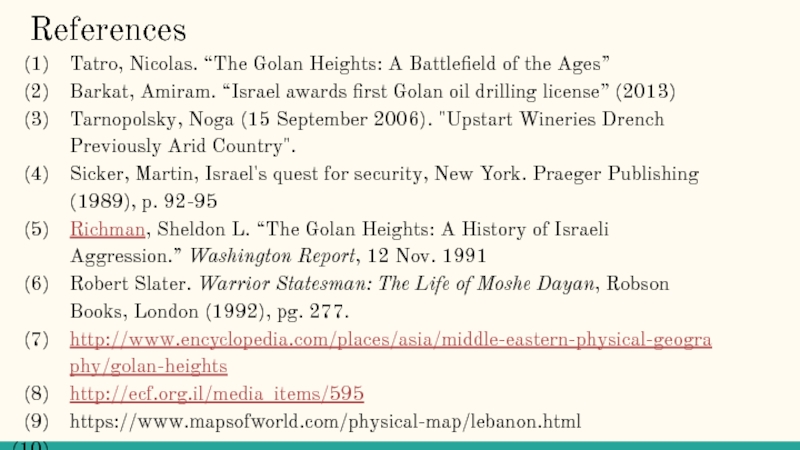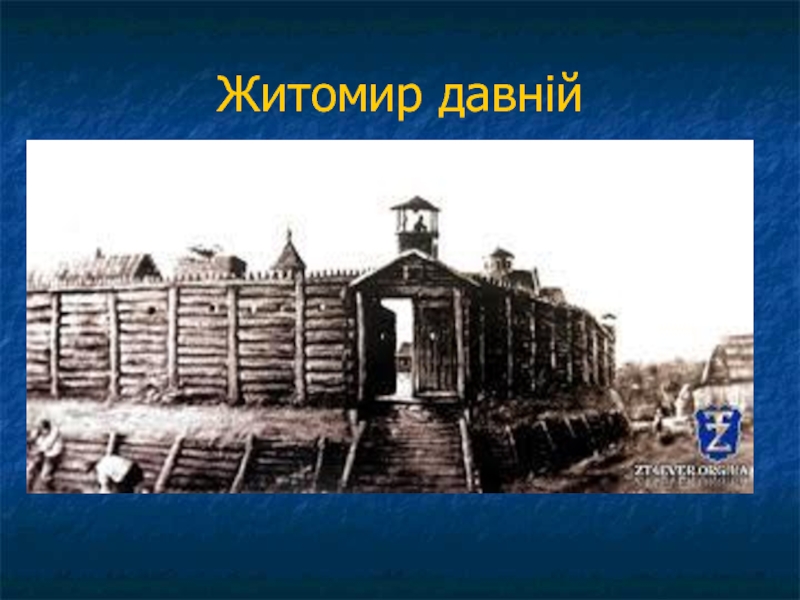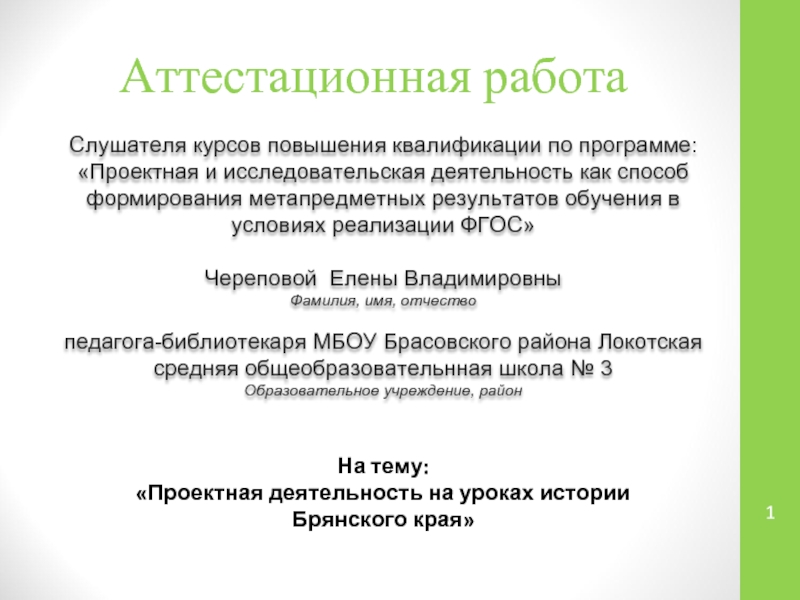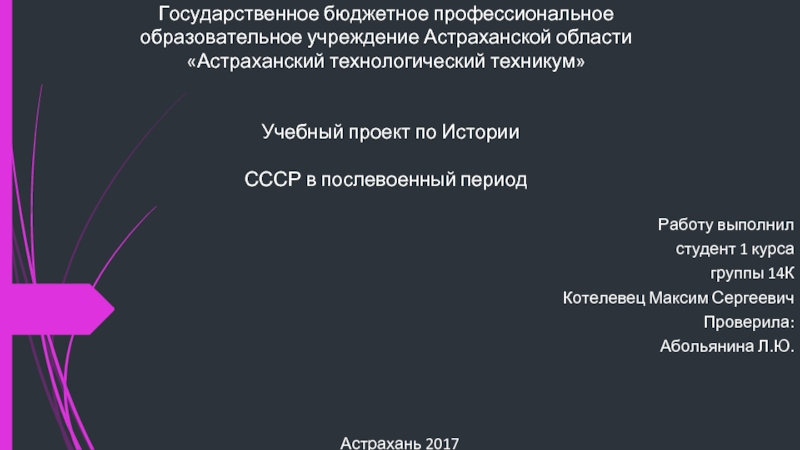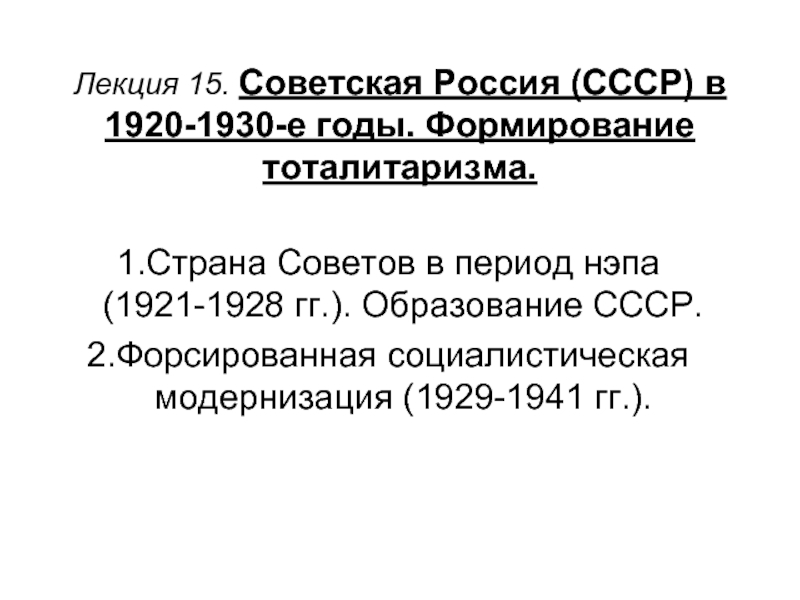- Главная
- Разное
- Дизайн
- Бизнес и предпринимательство
- Аналитика
- Образование
- Развлечения
- Красота и здоровье
- Финансы
- Государство
- Путешествия
- Спорт
- Недвижимость
- Армия
- Графика
- Культурология
- Еда и кулинария
- Лингвистика
- Английский язык
- Астрономия
- Алгебра
- Биология
- География
- Детские презентации
- Информатика
- История
- Литература
- Маркетинг
- Математика
- Медицина
- Менеджмент
- Музыка
- МХК
- Немецкий язык
- ОБЖ
- Обществознание
- Окружающий мир
- Педагогика
- Русский язык
- Технология
- Физика
- Философия
- Химия
- Шаблоны, картинки для презентаций
- Экология
- Экономика
- Юриспруденция
The Golan Heights Conflict презентация
Содержание
- 1. The Golan Heights Conflict
- 2. Is a plateau bordered by the Yarmouk
- 3. Significant objects (places) The Sea of Galilee
- 4. The Golan Heights as a geopolitical region
- 5. Economic significance: water supply
- 6. Economic significance: agriculture and viticulture 8,100 hectares
- 7. Oil The geologist of Israeli subsidiary Genie
- 8. Economic significance: other The Golan Heights
- 9. Historical Background The region became a part
- 10. 1960-70’s In 1967 Israel launched a preventive
- 11. After the War Purple line - the
- 12. UN United Nations Disengagement
- 13. Attempts to resolve the crisis diplomatically Israel
- 14. Thank you
- 15. References Tatro, Nicolas. “The Golan Heights: A
Слайд 2Is a plateau bordered by the Yarmouk river in the south,
Total Area - 1,800 km2
Area occupied by Israel - about 1,200 km2
Most of it is at an altitude of more than 1000 m above sea level.
The Golan Heights as a geographical region
Слайд 3Significant objects (places)
The Sea of Galilee - lake in Israel. It
Also known as The Sea of Galilee, Kinneret, Lake of Gennesaret, or Lake of Tiberias.
Today, it is the main source of water for the all-Israel water supply.
Mt.Hermon - the highest elevation point in Israel.
Radars
Mentioned in the Old Testament
Слайд 4The Golan Heights as a geopolitical region
Situated between Jordan, south Lebanon,
Today Israel possesses ⅔ of the Golan
Area captured from Syria and occupied by Israel during the Six-Day war, territory which Israel annexed in 1981. This region includes the western two-thirds of the geographical Golan Heights, as well as the Israeli-occupied part of Mount Hermon.
The Golan is a strategically important geopolitical region
Слайд 5Economic significance: water supply
The Golan Heights are rich in
More than 50% of Israel's fresh water is produced in this region.
According to experts, in the case of the transition of the Golan Heights to Syrian control, Israel will lose 70% of the watershed of the Kinneret, which will result in water famine and ecological catastrophe.(1)
Слайд 6Economic significance: agriculture and viticulture
8,100 hectares of land are under cultivation,
Golan Heights is also a suitable place for viticulture (cultivation of grapes).About a quarter of all wines, including 40% of those for export, are produced here(3);
The loss of these territories poses a significant threat to the agriculture of Israel, because the Golan Heights were used by the Syrians to fire at Israeli farmland.
Слайд 7Oil
The geologist of Israeli subsidiary Genie Energy, Afek Oil & Gas,
In April 2013, the State of Israel granted a license to search for oil in the southern Golan Heights of the company "Afek", a subsidiary of Genie Energy Ltd.
The production potential is billions of barrels of oil, but at the moment the specialists of the company still need to find out how high the recoverability of oil is.This greatly exacerbates the contradictions between Israel and Syria.
Слайд 8Economic significance: other
The Golan Heights are also one of the most
Another aspect of the importance of this territory for Israel is that leaving the Golan Heights is associated with significant budgetary costs for the resettlement of local residents and the need to increase the military contingent on the border with Syria.
The Golan plays a significant role in the Israeli economy. The loss of this territory will surely undermine the financial and economic well-being of Israel.
Слайд 9Historical Background
The region became a part of a newly independent Syrian
In 1948, Syria and other Arab countries invaded the newly established state of Israel and were defeated. An armistice was signed in 1949, but border conflicts continued.
War over water 1964-67
Syrians used the Golan Heights to constantly bombard peaceful Israeli border communities with artillery strikes [4].
Israel continued to build settlements in the DMZ thus provoking most of the Syrian attacks [5].
Small conflicts eventually resulted in a full scale war in 1967
Слайд 101960-70’s
In 1967 Israel launched a preventive strike on Syria, capturing most
115 Israeli and 2,500+ Syrian soldiers died in this battle [6]
Over 100,000 local residents (Syrians) fled as a result of war. Syria claims a large portion of them was expelled by the Israeli forces.
Israel was willing to return the whole territory in exchange for peace, but the Arab League refused.
In 1973 Syria attempted to recapture the Golan, but failed.
Слайд 11After the War
Purple line - the ceasefire border since 1974
UNDOF buffer
Military
Israel keeped building settlements in the area (violating UN resolution) - today there are 20,000+ Jewish settlers there
Слайд 12UN
United Nations Disengagement Observer Force (UNDOF) was established in
Agreement of Disengagement was signed on 31 May, 1974 in Geneva, Switzerland. It requires Israel and Syria to end ceasefire and restrain from any military actions [8]
UN does not recognize the Israeli annexation of the Golan
Слайд 13Attempts to resolve the crisis diplomatically
Israel and Syria finally began to
Syria demanded a withdrawal to pre-67 borders when she still controlled some of the Sea of Galilee shore. Water is very important to Syria
Israel agreed to return the whole Golan except for the strip of the Sea of Galilee shore. It is crucial for Israel to control 100% of the lake. Israel also demanded Syria to cut ties with Iran.
The talks failed and never fully reopened
Слайд 15References
Tatro, Nicolas. “The Golan Heights: A Battlefield of the Ages”
Barkat, Amiram.
Tarnopolsky, Noga (15 September 2006). "Upstart Wineries Drench Previously Arid Country".
Sicker, Martin, Israel's quest for security, New York. Praeger Publishing (1989), p. 92-95
Richman, Sheldon L. “The Golan Heights: A History of Israeli Aggression.” Washington Report, 12 Nov. 1991
Robert Slater. Warrior Statesman: The Life of Moshe Dayan, Robson Books, London (1992), pg. 277.
http://www.encyclopedia.com/places/asia/middle-eastern-physical-geography/golan-heights
http://ecf.org.il/media_items/595
https://www.mapsofworld.com/physical-map/lebanon.html
